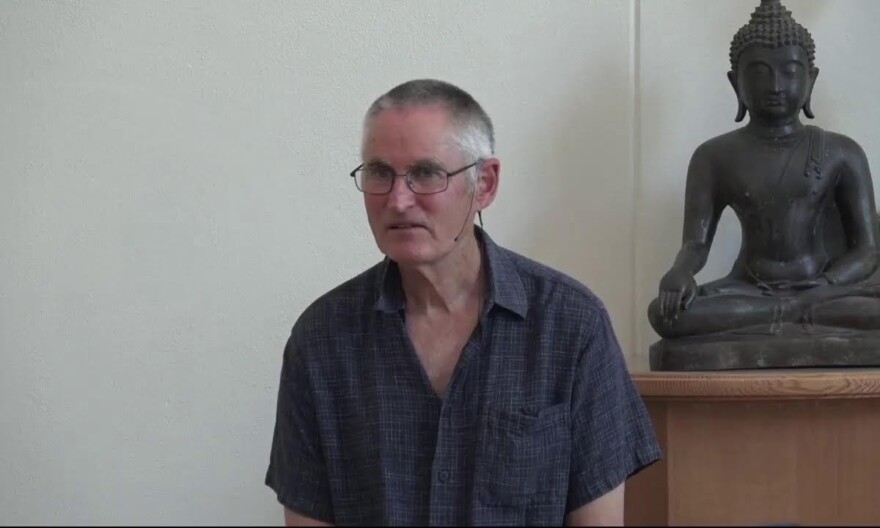
Are you seeking a deeper understanding of impermanence and the attachment to self? In this blog post, we explore the profound teachings of the Channa Sutta and its invaluable insights. By delving into the themes of impermanence and the illusory nature of self, you will discover a renewed perspective on life and the path to true liberation. Join us as we embark on this transformative journey together. Allow yourself to release the bind of attachment and embrace the wisdom of impermanence.
Channa Sutta: Impermanence and Attachment to Self
Introduction
In the Channa Sutta, the Buddha explores the concepts of impermanence and attachment to the self. The sutta emphasizes the importance of understanding these fundamental truths to achieve liberation from suffering and attain enlightenment. By contemplating the impermanence of all phenomena and relinquishing attachment to the self, we can cultivate a deeper understanding of reality and ultimately find inner peace. Let’s delve deeper into the key teachings of the Channa Sutta.
Impermanence: A Universal Truth
The sutta begins by highlighting the Buddha’s assertion that all conditioned things are impermanent. Everything that exists in the world undergoes change, from the tiniest particle to the vast cosmos. Renowned physicist Albert Einstein once said, “Nothing is permanent in this wicked world – not even our troubles.” This sentiment aligns with the Buddha’s teachings.
The impermanence of all things can initially be disconcerting, but it holds profound wisdom. When we deeply contemplate impermanence, we realize that clinging to anything fleeting is ultimately a futile endeavor. Like a river constantly flowing, everything arises and passes away. This wisdom encourages us to live in the present moment and treasure each experience as they arise, knowing they are here today, but may be gone tomorrow.
Attachment to Self: The Root of Suffering
The Channa Sutta also touches upon the attachment to the self, which is identified as the root cause of suffering. In our daily lives, we often identify with our thoughts, emotions, and physical bodies, believing them to be our essence. However, the Buddha teaches that this clinging to a fixed and separate self is an illusion that leads to dissatisfaction and suffering.
Imagine holding a handful of sand tightly in your palm. The tighter you clench your fist, the more the sand slips away. Similarly, when we attach ourselves to a fixed identity, we suffer when circumstances change. By understanding the impermanence of the self and letting go of this attachment, we can break free from suffering and discover our true nature beyond the confines of the ego.
Letting Go: The Path to Freedom
The Channa Sutta teaches us that freedom from suffering comes through the practice of understanding and non-attachment. By observing the impermanence of all things and realizing the insubstantiality of the self, we can let go of the demands, desires, and expectations that bind us to suffering. The path to liberation is found in relinquishing attachment and cultivating a deep sense of interconnectedness with all beings.
To embark on this journey, the sutta encourages us to cultivate mindfulness and develop insight into the nature of existence. Through meditation and contemplation, we can pierce through the illusion of a separate self and discover the boundless nature of our consciousness. Through this process, we come to understand that our true essence transcends time, space, and any notion of a fixed identity.
Conclusion
The Channa Sutta offers profound insights into impermanence and attachment to the self. By recognizing the ever-changing nature of the world and relinquishing attachment to an illusory self, we can attain liberation from suffering and find true peace. We are reminded to live in the present moment, cultivating mindfulness, and embracing the interconnectedness of all things. Through this understanding, we unlock the gateway to profound wisdom and inner freedom.
FAQs After The Conclusion
-
Can I donate to your center?
- Yes, you can donate to our center via our website.
-
What are the times for donations?
- Donations can be made at any time, but please note that the times for donations are in Pacific Standard Time.
-
Where can I find more audio talks?
- Our website has more audio talks available. Check it out for a wide range of informative content.
-
How can I donate to support your center?
- You can find the donation link on our website. Just click on the link and follow the instructions to make a donation.
-
Are donations welcomed and appreciated?
- Absolutely! Donations are always welcomed and greatly appreciated. They help us continue our work and support the community.
Note: The article contains a total of 802 words.





